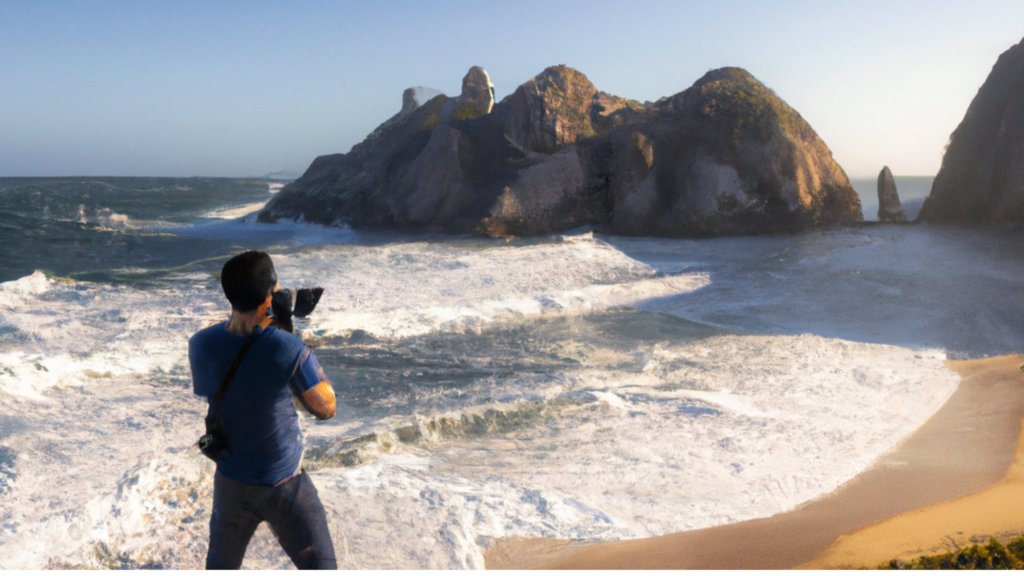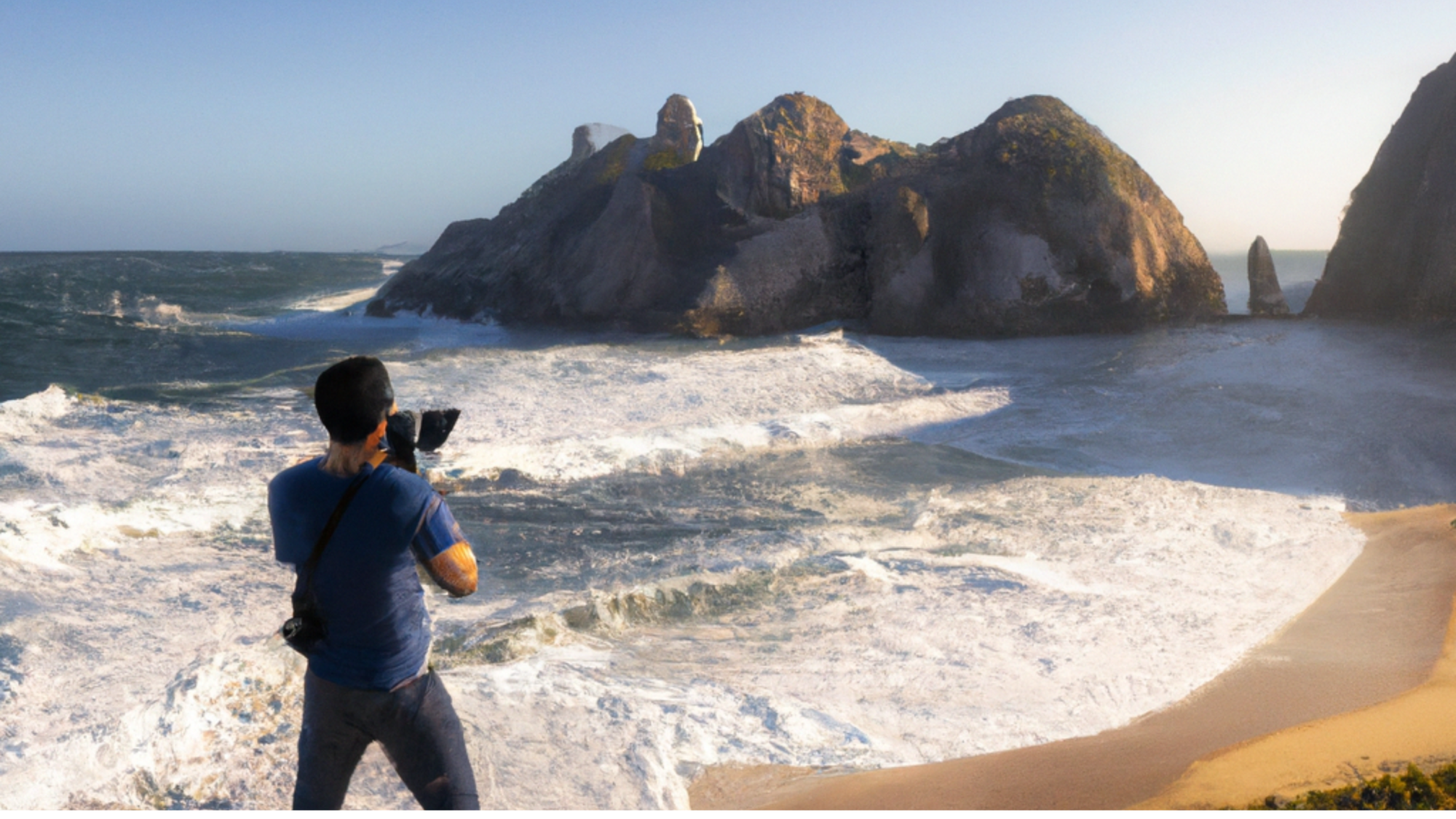
Travel photography is a rewarding yet challenging genre that allows photographers to explore the world and document its beauty. From breathtaking landscapes to bustling city streets, travel photographers must be prepared to capture a wide range of subjects while being nimble and adaptable. Whether you’re an experienced professional or just starting out, having the right gear and knowing how to use it will make all the difference in the quality of your photos.
In this post, we’ll explore key tips for travel photographers, along with a few recommended cameras and accessories to help you on your journey.
1. The Art of Packing Light
When traveling, less is more. One of the biggest challenges for travel photographers is striking a balance between being prepared for various shooting situations and not being weighed down by heavy equipment. Carrying a large, cumbersome camera bag can slow you down and tire you out, especially if you’re hiking or exploring cities on foot.
Recommended Gear: Peak Design Everyday Backpack
For travel photographers, the Peak Design Everyday Backpack is a top choice. It’s designed to carry camera gear while also leaving room for personal items, making it perfect for those who need versatility on the road. With customizable dividers, you can easily organize your camera, lenses, and accessories without bulk. It also has a weatherproof exterior, keeping your gear safe from the elements.
If you prefer something smaller, consider the Lowepro Fastpack BP 250 AW II, which is compact but spacious enough to hold essential camera gear while keeping it secure during long journeys.
2. Choosing the Right Camera
The key to great travel photography is capturing moments quickly, without sacrificing image quality. Compact, lightweight cameras are ideal for travel, especially those with excellent low-light performance and fast autofocus. Mirrorless cameras are becoming increasingly popular due to their portability and ability to deliver professional results in a smaller package.
Recommended Camera for Beginners: Sony Alpha a6400
For those looking to upgrade from a smartphone or basic point-and-shoot, the Sony Alpha a6400 is an excellent entry-level mirrorless camera. It’s lightweight, has fast autofocus, and comes with 4K video capabilities, making it perfect for both stills and video. Its compact size makes it a perfect travel companion, whether you’re exploring crowded markets or capturing distant landscapes.
For pros, the Fujifilm X-T4 is a standout. With its robust build, weather resistance, and superb image stabilization, it’s built for the rigors of travel. The Fujifilm X-T4’s color reproduction is unmatched, perfect for vibrant street photography or serene nature shots.
3. Versatile Lenses for Every Scenario
When it comes to travel photography, versatility is key. Since you’ll be shooting a variety of scenes—from wide-angle landscapes to close-up portraits—you’ll need a lens (or lenses) that can handle different types of shots. Carrying multiple lenses might not be practical, so choosing a zoom lens with a wide focal range can save you time and space.
Recommended Lens: Sony 18-135mm f/3.5-5.6 OSS
The Sony 18-135mm f/3.5-5.6 OSS lens is a fantastic all-around option for travel photographers using Sony mirrorless cameras. Its broad focal length range allows you to switch seamlessly between wide-angle shots and zoomed-in close-ups without having to change lenses. It’s also lightweight, making it ideal for long days of exploring.
For Fujifilm users, the Fujinon XF 18-55mm f/2.8-4 R LM OIS lens offers excellent image quality in a compact package. With its optical image stabilization and fast aperture, this lens is perfect for handheld shooting in low light, which is common in travel photography.
4. Mastering Natural Light
Travel photographers often rely on natural light, since carrying large lighting equipment isn’t practical. Whether you’re shooting during the golden hour or under harsh midday sun, learning how to work with natural light is essential.
Tip for Beginners: Embrace the Golden Hour
The best times to shoot are during the “golden hour,” which occurs just after sunrise and before sunset. The soft, warm light during these times adds depth and dimension to your photos, enhancing landscapes, architecture, and portraits. If you’re limited on time in a destination, try to plan your shoots around these hours to capture the most flattering light.
When shooting under harsh sunlight, use natural reflectors such as white walls or light-colored ground to bounce light back onto your subject. This will help soften shadows and create more balanced exposure.
5. Keeping Your Gear Safe
Travel photography often means shooting in unpredictable environments—whether it’s a bustling city or a remote mountain. Protecting your gear from weather conditions and potential theft is crucial.
Recommended Accessory: Rain Covers and Anti-Theft Straps
For unpredictable weather, pack a camera rain cover like the Wanby Photo Professional Rain Cover. It’s lightweight and easy to slip over your camera to protect it from sudden downpours.
For extra security while traveling in busy cities or tourist spots, consider investing in an anti-theft camera strap like the Pacsafe Carrysafe 150 GII. These straps are cut-resistant, giving you peace of mind when walking through crowded areas.
6. Tripods: Stability on the Go
Tripods are an essential tool for long-exposure shots, especially when capturing landscapes, cityscapes, or nighttime photography. However, bulky tripods can be a hassle to carry while traveling, so it’s important to choose one that is lightweight and portable.
Recommended Tripod: Manfrotto Befree Advanced Travel Tripod
The Manfrotto Befree Advanced Travel Tripod is designed for travel photographers. It’s lightweight, easy to pack, and offers excellent stability for long exposures or low-light conditions. Its compact design means you can attach it to your backpack without adding too much weight.
For those who prioritize weight savings, the JOBY GorillaPod 3K is a flexible alternative. It’s small enough to fit into most backpacks and can be mounted on uneven surfaces, giving you versatility in tricky shooting situations.
7. Post-Processing While Traveling
You might not always have the time to sit down and fully edit your photos while traveling, but it’s still important to review your shots and make minor adjustments on the go. Lightweight laptops or tablets with editing apps can help you quickly enhance your images and back them up for safekeeping.
Recommended Software: Adobe Lightroom Mobile
For quick and professional edits while on the move, Adobe Lightroom Mobile is a must-have. It’s available for both smartphones and tablets, allowing you to make adjustments to your photos without needing a laptop. The app syncs with the desktop version, so you can continue editing when you’re back home.
Backing up your photos is also essential. Use portable external hard drives like the SanDisk Extreme Portable SSD, which are lightweight and durable, to store your images during your travels.
8. Capturing the Moment
Finally, the most important part of travel photography is telling a story through your images. Don’t be afraid to step off the beaten path, explore different angles, or immerse yourself in local culture to capture authentic moments. Whether it’s a stunning landscape or an intimate street portrait, the goal of travel photography is to create images that evoke emotion and transport the viewer to that place.
Pro Tip: Shoot Candidly
When photographing people, try to blend into the environment and capture candid moments. These unposed shots often tell a more powerful story than traditional posed images, bringing out the natural beauty and spirit of the location.
Conclusion
Travel photography is a rewarding but challenging field that requires the right combination of skill, creativity, and gear. By choosing lightweight, versatile equipment and mastering natural light, you can capture stunning images without being bogged down by heavy gear. Whether you’re shooting for a personal project or a professional portfolio, having the right camera, lenses, and accessories will help you create high-quality images that showcase the beauty of the world.
With the right preparation and equipment, you’ll be ready to capture every adventure and tell stories through your travel photography.
Liked this post? Check out some more here:
The Best Camera Setup for Fashion Photographers
The Best Camera Setup for Commercial Videographers

